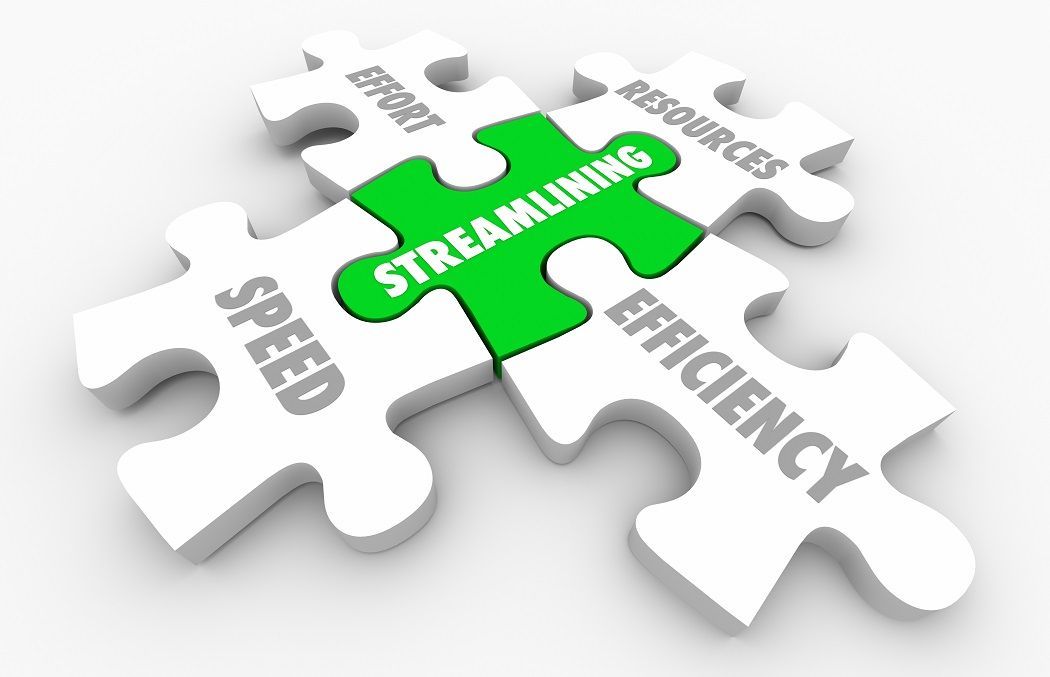About Streamlining Accounting Processes with Tally ERP 9
Streamlining accounting refers to the process of optimizing and simplifying financial and accounting procedures within an organization. It involves adopting efficient methods and utilizing technology to streamline various aspects of the accounting function, such as data entry, record-keeping, reporting, and analysis. The goal is to eliminate redundancies, improve accuracy, save time, and enhance overall productivity.
One of the key areas where streamlining accounting is beneficial is data entry. Traditionally, manual data entry has been time-consuming and prone to errors. Streamlining accounting involves leveraging automation and digital tools to automate data entry processes. For example, organizations can use optical character recognition (OCR) technology to scan and extract information from invoices, receipts, and other financial documents. This eliminates the need for manual data entry, reducing the chances of errors and improving efficiency.
Another important aspect of streamlining accounting is record-keeping. Maintaining accurate and up-to-date financial records is essential for compliance, decision-making, and financial analysis. Streamlining accounting involves digitizing and centralizing record-keeping systems. By utilizing cloud-based accounting software, organizations can store and access financial data securely from anywhere, facilitating collaboration and reducing the risk of data loss. Additionally, digital record-keeping allows for easy search and retrieval of information, saving time and improving accessibility.
Streamlining accounting also focuses on improving financial reporting processes. Generating financial reports, such as balance sheets, income statements, and cash flow statements, can be complex and time-consuming. Streamlining accounting involves implementing reporting software that automates the generation of financial reports. This reduces manual effort, ensures accuracy, and allows for quick and efficient reporting to stakeholders, such as management, investors, and regulatory bodies.
Furthermore, streamlining accounting encompasses enhancing financial analysis capabilities. Organizations need to analyze financial data to gain insights into their performance, identify trends, and make informed decisions. Streamlining accounting involves leveraging data analytics tools and techniques to process and interpret financial data efficiently. This enables organizations to generate meaningful reports, perform variance analysis, and conduct predictive modeling to support strategic decision-making.
Streamlining accounting also involves integrating different accounting functions and systems within an organization. Many organizations have separate systems for accounts payable, accounts receivable, payroll, and general ledger. This can result in data silos, duplication of efforts, and inefficiencies. Streamlining accounting aims to integrate these systems using enterprise resource planning (ERP) software or other integrated accounting solutions. This allows for seamless flow of data between different functions, reducing manual reconciliation and ensuring data consistency across the organization.
Moreover, streamlining accounting involves implementing strong internal controls and compliance measures. By standardizing processes and using automated controls, organizations can mitigate the risk of fraud, errors, and non-compliance. This includes implementing segregation of duties, establishing approval workflows, and enforcing access controls to protect sensitive financial information.
Streamlining accounting is a comprehensive approach to optimize financial and accounting processes within an organization. It involves leveraging automation, digital tools, and integrated systems to simplify data entry, record-keeping, reporting, and analysis. By streamlining accounting processes, organizations can save time, improve accuracy, enhance productivity, and make better-informed decisions based on reliable financial information.
Streamlining Accounting Processes with Tally ERP 9
Tally ERP 9 is a widely used accounting software that streamlines and automates various accounting processes for businesses of all sizes. It offers a comprehensive set of tools and features that enable efficient management of financial transactions, reporting, inventory, and more. In this article, we will delve into the key ways in which Tally ERP 9 streamlines accounting processes, highlighting its benefits and how it can help businesses save time, reduce errors, and improve overall productivity.
Automated Bookkeeping :
One of the significant advantages of Tally ERP 9 is its ability to automate bookkeeping processes. With Tally, businesses can enter financial transactions, such as sales, purchases, and expenses, and the software automatically records them in the appropriate ledgers. This automation eliminates the need for manual data entry, reducing the chances of errors and saving valuable time. Tally ERP 9 also supports bank reconciliation, making it easier to match bank statements with accounting records and ensure accuracy.
Simplified Financial Reporting:
Tally ERP 9 simplifies the process of generating financial reports, such as balance sheets, profit and loss statements, and cash flow statements. The software allows users to define financial periods, create templates for reports, and customize the format according to their requirements. With just a few clicks, businesses can generate accurate and up-to-date financial reports, enabling better decision-making and providing insights into the company’s financial health.
Efficient Inventory Management :
Tally ERP 9 offers robust inventory management features that help businesses streamline their stock control processes. The software allows for the creation of item masters, where details like stock levels, reorder points, and batch numbers can be recorded. Tally also supports the tracking of stock movement, ensuring businesses have real-time visibility into their inventory. By automating inventory management, Tally ERP 9 minimizes the risk of stockouts, optimizes purchasing decisions, and enhances overall supply chain efficiency.
Integration with Tax Compliance:
Tax compliance is a critical aspect of accounting, and Tally ERP 9 provides seamless integration with various tax systems, making it easier for businesses to comply with tax regulations. The software supports GST (Goods and Services Tax) calculations, allowing users to generate accurate tax invoices, file returns, and reconcile tax liabilities. Additionally, Tally ERP 9 provides updates on changes in tax laws and automatically applies them to ensure businesses stay compliant with the latest regulations, minimizing the risk of penalties and fines.
Data Security and Accuracy :
Maintaining data security and accuracy is paramount in accounting processes. Tally ERP 9 offers robust security measures to protect sensitive financial data. It allows users to define access rights and permissions, ensuring that only authorized individuals can access and modify data. Tally also provides data backup and restoration features, safeguarding against data loss due to hardware failures or system crashes. With its data validation and verification mechanisms, Tally ERP 9 helps maintain data accuracy by detecting and preventing errors before they impact financial records.
Customization and Scalability:
Every business has unique accounting requirements, and Tally ERP 9 offers a high level of customization to cater to specific needs. Users can customize chart of accounts, voucher formats, and reports to align with their business processes. Moreover, Tally ERP 9 is highly scalable, capable of handling the accounting needs of small startups to large enterprises with multiple branches and locations. The software can accommodate growing data volumes and user requirements, ensuring it remains a reliable accounting solution as businesses expand.
What is the method of streamlining?
Streamlining is a method or approach aimed at improving efficiency and optimizing processes within an organization. It involves identifying and eliminating unnecessary steps, reducing redundancies, and simplifying workflows to achieve better productivity and resource utilization. Streamlining is a continuous improvement process that enables businesses to operate more smoothly, reduce costs, and deliver better products or services to customers.
One of the key aspects of streamlining is the identification and elimination of waste. Waste can take various forms, including excessive paperwork, unnecessary approvals, redundant tasks, overproduction, and waiting time. By critically examining each step of a process, streamlining seeks to remove these wasteful elements, allowing resources to be allocated more efficiently. This can result in cost savings, improved cycle times, and increased customer satisfaction.
To streamline a process, it is crucial to have a thorough understanding of the workflow and the underlying objectives. This requires mapping out the entire process, identifying its inputs, outputs, and key activities. Process mapping helps visualize the flow of work, making it easier to identify bottlenecks, redundancies, and areas for improvement.
Once the process is mapped, streamlining involves analyzing each step and questioning its necessity. This includes evaluating the value added by each activity, determining if it can be simplified or automated, and identifying opportunities for standardization. By doing so, unnecessary activities can be eliminated, and the remaining steps can be optimized for efficiency.
Streamlining often involves adopting new technologies and tools that can automate tasks or streamline communication. For example, implementing a customer relationship management (CRM) system can centralize customer data, streamline sales processes, and improve customer service. Similarly, workflow management tools can automate repetitive tasks, facilitate collaboration, and reduce errors. By leveraging technology effectively, businesses can streamline their operations and free up valuable time and resources.
Another important aspect of streamlining is fostering a culture of continuous improvement within the organization. This involves encouraging employees to identify inefficiencies, share ideas, and participate in the streamlining process. By involving employees in the improvement efforts, organizations can tap into their expertise, increase engagement, and achieve sustainable results. Regular feedback mechanisms, such as suggestion boxes or team meetings, can be implemented to collect ideas and monitor progress.
Streamlining is not a one-time event but rather an ongoing process. As business needs evolve and new challenges arise, processes may need to be reevaluated and further streamlined. It is essential to monitor the impact of streamlining efforts and measure key performance indicators to assess the effectiveness of the changes implemented. This data-driven approach enables organizations to make informed decisions and adjust their processes as needed.
Streamlining is a method of optimizing processes to improve efficiency, reduce waste, and enhance overall performance. It involves analyzing workflows, identifying and eliminating waste, adopting technology, and fostering a culture of continuous improvement. By streamlining their operations, organizations can achieve better resource utilization, reduce costs, and deliver improved products or services to their customers.
Conclusion:
Tally ERP 9 is a powerful accounting software that streamlines and automates various accounting processes, helping businesses save time, reduce errors, and improve overall productivity. With its features for automated bookkeeping, simplified financial reporting, efficient inventory management, integration with tax compliance, data security, customization, and scalability, Tally ERP 9 proves to be a comprehensive solution for businesses of all sizes. By leveraging Tally ERP 9, organizations can enhance their accounting operations, gain valuable insights, and focus on strategic decision-making, ultimately driving growth and success.
Tally ERP 9 minimizes errors by automating calculations and eliminating manual data entry. It performs real-time validation checks, detects and alerts users about discrepancies, and generates accurate financial reports.
Yes, Tally ERP 9 offers a wide range of financial reports such as balance sheets, profit and loss statements, cash flow statements, and trial balances. These reports provide insights into the financial health of the business.
Yes, Tally ERP 9 helps in tax compliance by enabling users to calculate and record GST (Goods and Services Tax) transactions accurately. It generates GST reports, facilitates e-filing of returns, and keeps businesses compliant with tax regulations.
Tally ERP 9 supports integration with various third-party software and systems. It can be integrated with banking systems, payment gateways, customer relationship management (CRM) software, and other business applications.
Yes, Tally ERP 9 provides comprehensive inventory management features. It allows businesses to track stock levels, manage purchase orders, generate stock reports, and perform stock reconciliations.



